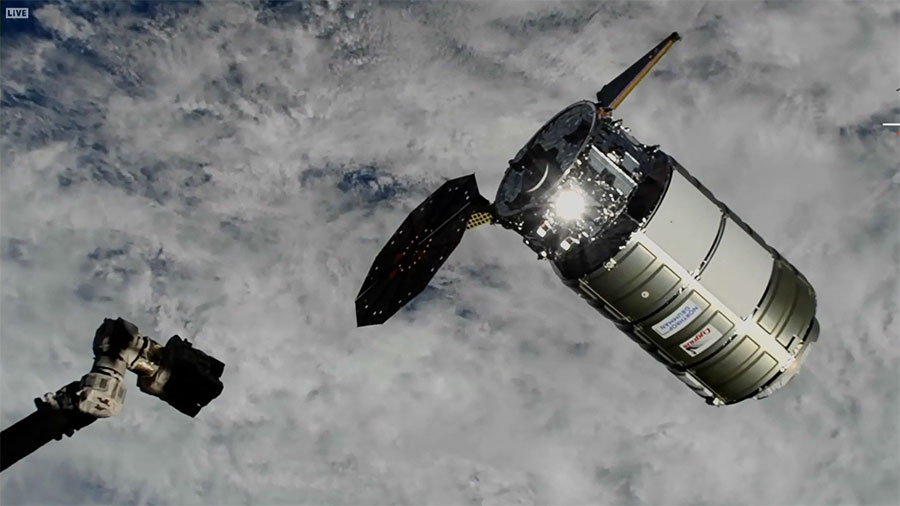
Early this morning, Northrop Grumman’s SS Sally Ride Cygnus spacecraft arrived at the International Space Station carrying 8,200 pounds of supplies for the seven crewmembers. However, the Cygnus is missing one of its now iconic circular solar panels due to an unknown failure.
Cygnus spacecraft suffers failure in one of two solar panels
Shortly after launch and regular announcement of solar panel deployment was missing from official channels at Northrop Grumman and NASA. The Cygnus, named after America’s first female astronaut, was launched on November 7 after a scrubbed launch attempt on November 6 due to fire alarms at Northrop’s mission control center in Virginia. Its second to last Antares 230+ rocket carried it successfully into an orbit on track to rendezvous with the ISS, but a few hours later, NASA reported only one solar panel was deployed.
NASA and Northrop Grumman determined it had enough power produced by the one panel to make its way to the ISS. This brings us to today at 8:03 a.m. when the SS Sally Ride was installed on one of the station’s berthing ports using the Canadarm2 robotic arm.
This is Cygnus’ 18th resupply mission to the ISS, with its first being in 2014, carrying several scientific experiments, food, and other supplies. Most importantly, it’s carrying a bracket for the new iROSA solar panels that are being installed over the old ones, as their quality has degraded over the decades. Cygnus is planned to remain on the station until January, when it will unberth from the station and be destroyed during reentry while filled with trash.
Not the first failure of Northrop’s solar panels
Earlier this year, NASA launched its Lucy mission to fly by eight different asteroids. However, it will do so with a solar panel that’s only partially deployed. Designed by Northrop Grumman, the Lucy spacecraft shares technology with Cygnus radial solar panels. There’s no word yet as to what caused either this week’s Cygnus failure or Lucy’s, but it would not be a surprise if they are related somehow.
There are only four more flights of Northrop Grumman’s Cygnus spacecraft left in its CRS-2 (Commerical Resupply Services-2) contract with NASA. However, the ISS is planned to stay operational until 2030, so a CRS-3 contract with SpaceX, Northrop, and possibly Sierra Space wouldn’t be a surprise.
Out of those four final Cygnus launches, only one will be on an Antares rocket. Due to Russia’s invasion of Ukraine, Northrop will run out of engines and other materials to build that rocket after the next launch. The final three Cygnus missions will launch on a SpaceX Falcon 9, and in the future, Antares will be reborn with the help of Firefly, producing a new first-stage booster.
FTC: We use income earning auto affiliate links. More.

Comments